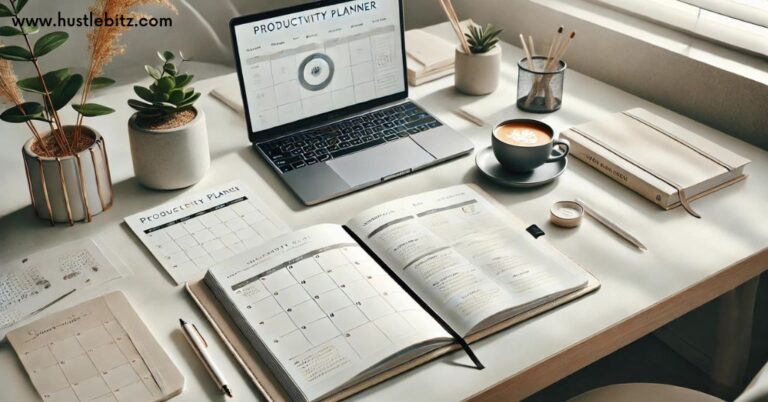When selecting a productivity planner, prioritize features such as goal-setting pages to clarify objectives and enhance accountability. Look for daily and weekly scheduling layouts that translate long-term goals into actionable tasks. Effective time management tools, including time blocking capabilities and task prioritization techniques, improve focus. Additionally, consider planners with progress tracking features, like review sections and visual graphs that monitor achievements. Space for notes fosters creativity and reflection, allowing for personal growth. With these features, a productivity planner can significantly boost efficiency and help you stay aligned with your goals. Explore further insights to refine your choice.
Key Takeaways
- Look for goal-setting pages that allow you to articulate and track both short-term and long-term objectives effectively.
- Ensure the planner includes daily and weekly scheduling layouts to translate goals into actionable tasks.
- Opt for planners with time blocking capabilities to enhance focus and improve task efficiency.
- Select planners that offer task prioritization tools, like the Eisenhower Matrix, for managing workload effectively.
- Choose planners with dedicated space for notes and reflections to foster creativity and continuous improvement.
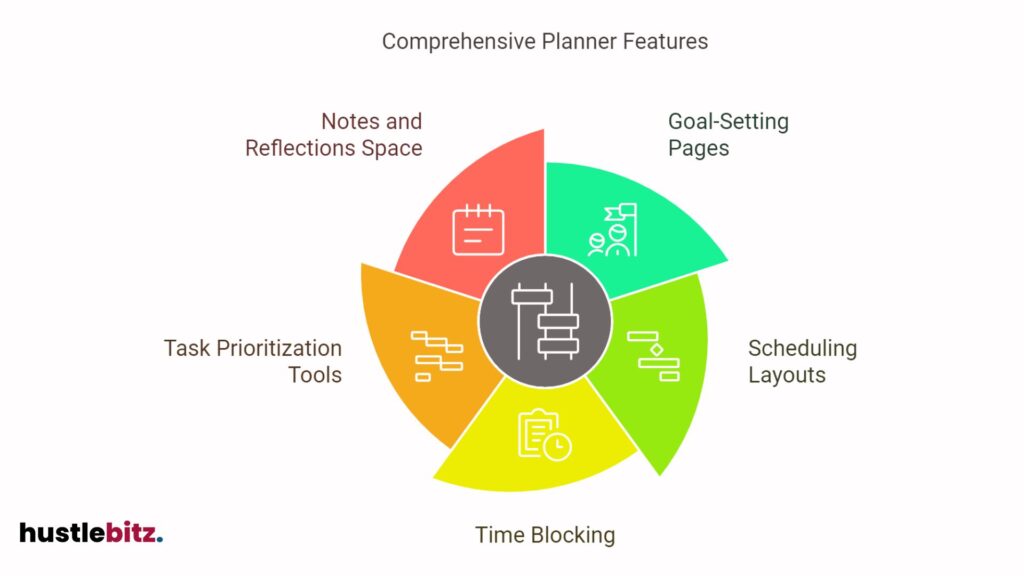
Goal-Setting Pages

Goal-setting pages serve as the foundation for a productivity planner, enabling users to articulate their objectives and track progress effectively. A well-designed goal planner not only encourages individuals to set goals but also provides a structured approach to achieving them. These pages typically include sections for defining short-term and long-term productivity goals, thereby allowing users to break down larger aspirations into manageable tasks.
Incorporating specific criteria for goal-setting, such as the SMART (Specific, Measurable, Achievable, Relevant, Time-bound) framework, can significantly enhance the effectiveness of a planning system. This approach helps users clarify their intentions and ensures that their goals are realistic and achievable within a defined timeframe. By documenting their goals, users create a tangible reference that fosters accountability and motivation throughout the planning process.
Moreover, a productivity planner can help individuals monitor their progress through regular check-ins and reflections. By revisiting goal-setting pages, users can assess what strategies are working and make necessary adjustments. This iterative process not only cultivates a deeper understanding of personal capabilities but also enhances overall productivity.
Daily Scheduling Layouts
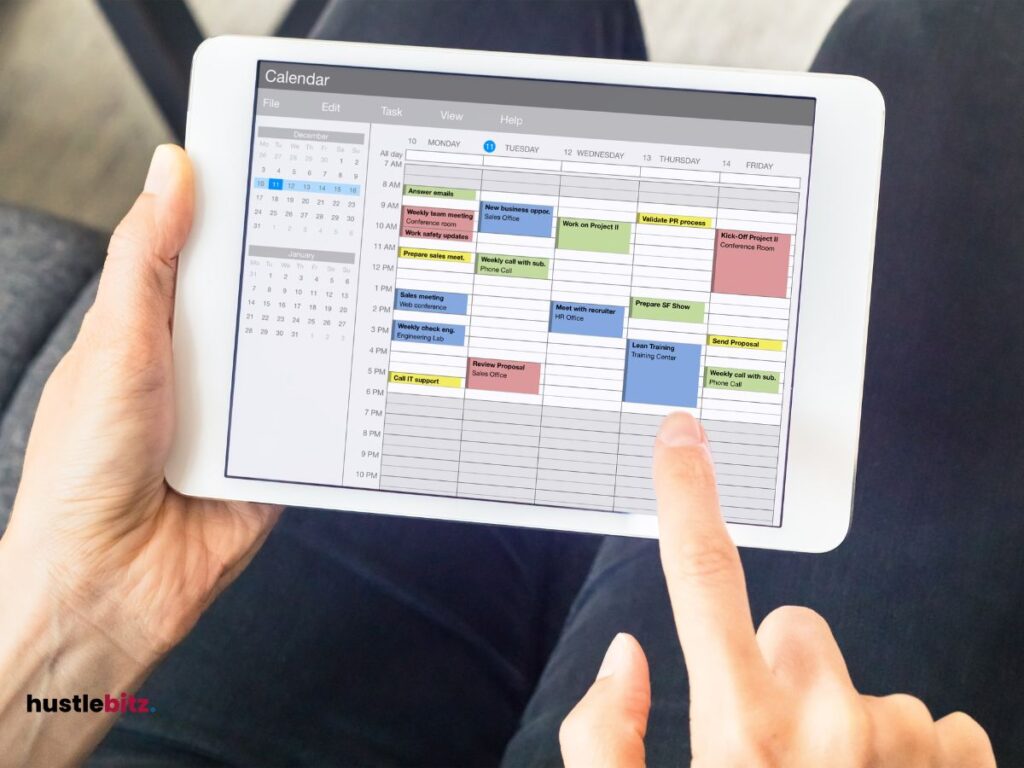
Building on the foundation established by goal-setting pages, daily scheduling layouts play a pivotal role in translating objectives into actionable tasks on a day-to-day basis. These layouts are essential components of an effective planner system, allowing users to break down their long-term goals into manageable daily tasks. A well-designed daily scheduling layout enhances productivity by providing a structured format that encourages focus and organization.
One of the most popular formats is the undated daily planner, which offers flexibility and customization. Unlike dated planners, these allow individuals to start using them at any point in the year, without the constraints of pre-assigned dates. This feature is particularly beneficial for those who prefer to plan their days based on their unique schedules.
Incorporating a weekly overview within the daily scheduling layout can further enhance efficiency. This addition allows users to glance at the upcoming week while detailing daily tasks, fostering a holistic approach to time management. The integration of a weekly overview aids in prioritizing tasks and aligning them with broader objectives.
Ultimately, daily scheduling layouts are vital for anyone looking to maximize their productivity. By providing clear spaces for daily tasks and the flexibility of an undated format, these layouts empower users to take control of their time effectively. When selecting a productivity planner, ensure it includes robust daily scheduling layouts that cater to your personal and professional needs.
Weekly and Monthly Views
A comprehensive productivity planner should include both weekly and monthly views to facilitate strategic planning and long-term visioning. The integration of these two perspectives allows users to effectively balance immediate tasks with overarching goals.
Weekly planning provides a detailed snapshot of the upcoming week, enabling individuals to prioritize tasks, allocate time effectively, and stay on top of deadlines. With a clear view of the week ahead, users can identify potential bottlenecks and adjust their schedules accordingly.
Monthly views, on the other hand, offer a broader context that aids in tracking progress toward larger objectives. This perspective is essential for assessing performance over time, enabling users to mark significant milestones and identify patterns in productivity. By incorporating monthly views, a planner helps users remain focused on their long-term aspirations while managing daily responsibilities.
Moreover, the combination of weekly and monthly planning gives users the flexibility to adapt to changing circumstances. As priorities shift, having both views readily available allows for quick adjustments and realignment of goals. This dual approach not only enhances productivity but also fosters a sense of accomplishment as users see their progress unfold.
Ultimately, a well-designed productivity planner that includes both weekly and monthly views empowers individuals to take control of their time effectively. By leveraging these features, users can optimize their planning processes and ensure that they remain on track toward achieving their personal and professional aspirations.
Time Blocking Capability
Time blocking capability is a crucial feature in a productivity planner, enabling users to allocate specific time slots for tasks, thereby enhancing focus and efficiency throughout the day. By structuring the day in this manner, individuals can significantly improve their time management skills and ensure that their most important tasks are prioritized effectively.
A planner with time blocking capability allows for a visual representation of one’s daily planning, making it easier to identify periods for focused work and necessary breaks. This structured approach not only helps in setting realistic goals but also plays a vital role in boosting productivity. Each time block serves as a commitment, encouraging users to stay engaged and on task.
Here’s how time blocking can transform your daily routine:
| Benefits | Impact on Productivity | Essential Tools |
| Improved Focus | Reduces distractions | Digital calendars |
| Enhanced Task Completion | Increases output | Timer apps |
| Better Work-Life Balance | Minimizes burnout | Notebooks or planners |
Incorporating time blocking into your daily planning can lead to remarkable results. A well-designed productivity planner can also offer various productivity tools that complement this method, such as reminders for each block and the ability to adjust time slots as needed. By embracing this approach, you are not just scheduling tasks; you are cultivating a habit that promotes efficiency and effectiveness in your daily life.
Task Prioritization Tools

Effective task prioritization tools are essential for ensuring that individuals focus on high-impact activities, allowing them to navigate their workload with clarity and purpose. A well-structured productivity planner should incorporate these tools to help users identify and prioritize their important tasks effectively. By utilizing a daily planner that includes features for ranking tasks, users can easily distinguish between urgent and non-urgent responsibilities.
One of the most effective methods for task prioritization is the Eisenhower Matrix, which divides tasks into four categories: urgent and important, important but not urgent, urgent but not important, and neither urgent nor important. This visual approach enables users to manage their time efficiently, directing attention towards what truly matters.
Additionally, incorporating features such as color coding or numbering tasks can enhance the prioritization process within a productivity planner. By visually categorizing tasks, users can quickly assess their workload and make informed decisions about where to focus their efforts. Furthermore, the ability to set deadlines and reminders for important tasks ensures that users stay accountable and on track.
Ultimately, the effectiveness of a productivity planner lies in its capacity to simplify the prioritization process. By integrating robust task prioritization tools, individuals can not only manage their time more effectively but also enhance their overall productivity. This clarity empowers users to achieve their goals with confidence, transforming their approach to daily responsibilities and long-term objectives alike.
Progress Tracking Features

Monitoring progress through a productivity planner is crucial for maintaining motivation and achieving long-term goals. One of the most effective ways to ensure that you are on track is to utilize progress tracking features. These features enable you to evaluate your daily productivity and make necessary adjustments to plan your day more effectively.
When selecting a productivity planner, consider the following essential progress tracking features:
- Weekly/Monthly Review Sections: Allows for comprehensive assessments of your accomplishments over time.
- Goal-Setting Pages: Facilitates the setting of specific, measurable objectives that guide your daily actions.
- Progress Charts or Graphs: Visual representations of your progress that highlight trends and patterns.
- Daily Checklists: Provides a tangible way to track completed tasks and boosts motivation as you see items checked off.
- Reflection Prompts: Encourages introspection on what worked and what didn’t, fostering continuous improvement.
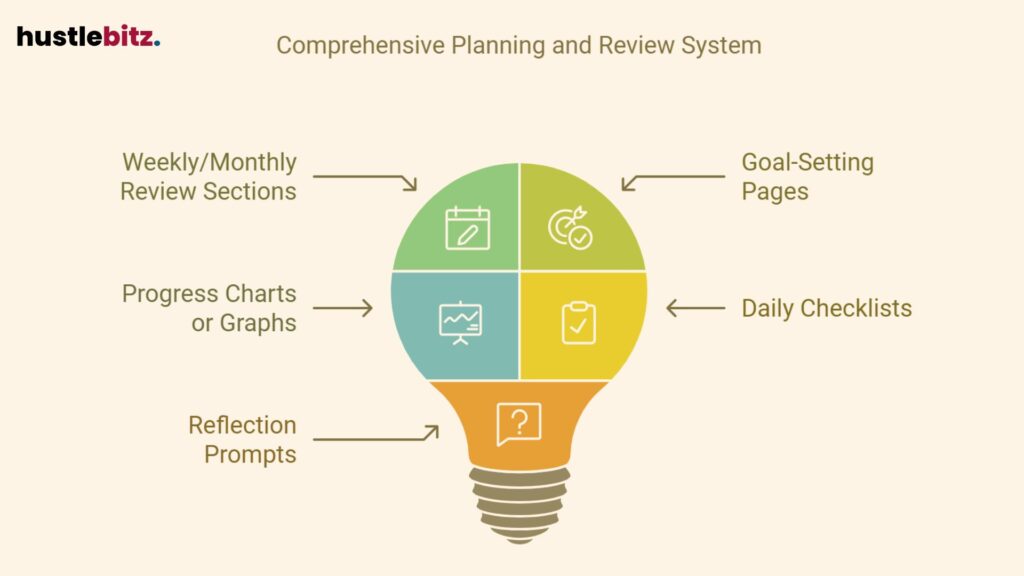
Incorporating these features into your productivity planner can significantly enhance your ability to track progress and maximize productivity. By regularly reviewing your achievements, you can stay motivated and aligned with your goals.
This conscious approach not only helps you plan your day more effectively but also reinforces positive habits that contribute to long-term success. Emphasizing progress tracking ensures that you remain accountable and focused, ultimately leading to a more productive and fulfilling journey towards your aspirations.
Space for Notes
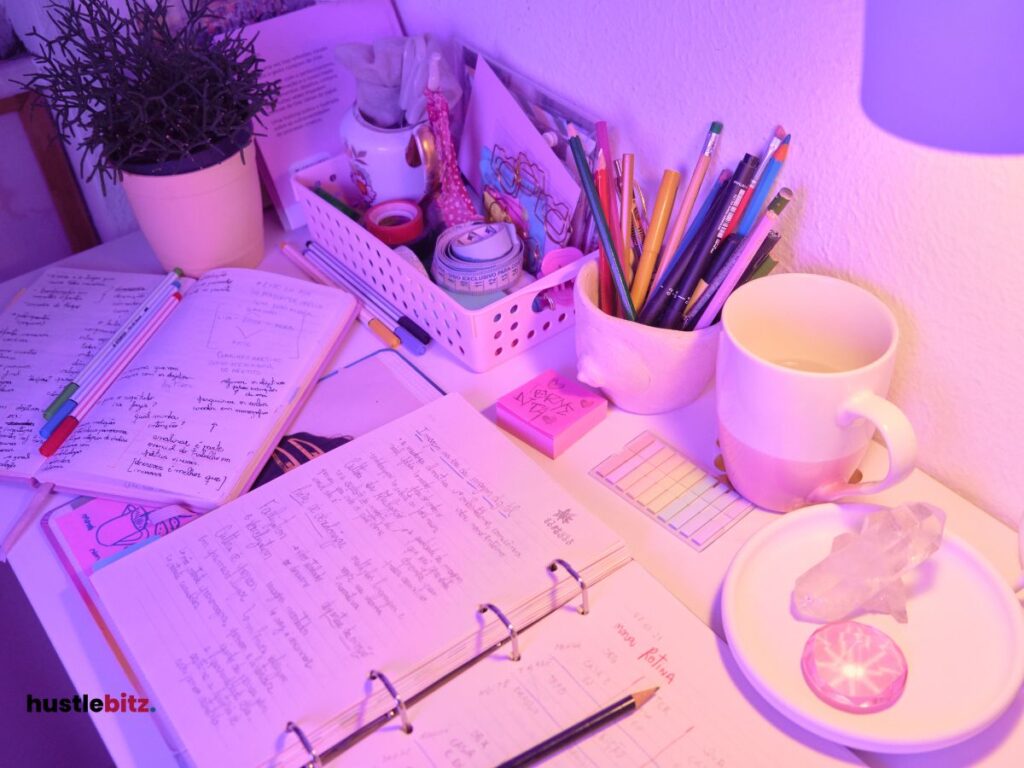
An ample space for notes within a productivity planner is essential for capturing ideas, reflections, and additional tasks that may arise throughout the day. This feature allows users to jot down thoughts that might not fit neatly into scheduled tasks or appointments. When you use the planner effectively, having dedicated space for notes can enhance your overall productivity by providing a creative outlet for brainstorming and problem-solving.
The daily pages of a productivity planner should ideally include designated areas for notes, ensuring that insights and spontaneous ideas are not lost amidst a busy schedule. This space for notes encourages users to engage more deeply with their planning process, facilitating a flow of creativity that can lead to innovative solutions and improved time management.

Moreover, the ability to document reflections on daily achievements or challenges further enriches the planning experience. It allows individuals to assess what strategies are working and which need adjustment, promoting continuous personal development.
When a productivity planner incorporates ample note-taking space, it transforms into a versatile tool that caters to both structured planning and free-form ideation.
Final Thoughts
Choosing the right productivity planner is key to enhancing your daily efficiency and achieving your long-term goals. By focusing on essential features such as goal-setting pages, daily and weekly scheduling layouts, time-blocking capabilities, task prioritization tools, progress tracking, and ample space for notes, you can tailor your planner to suit your unique needs. These features not only help you stay organized but also foster a proactive mindset that drives continuous improvement. A well-selected planner becomes more than just a tool—it’s a partner in your journey toward greater productivity and success.

